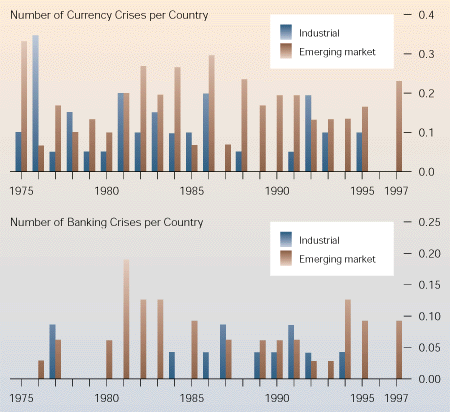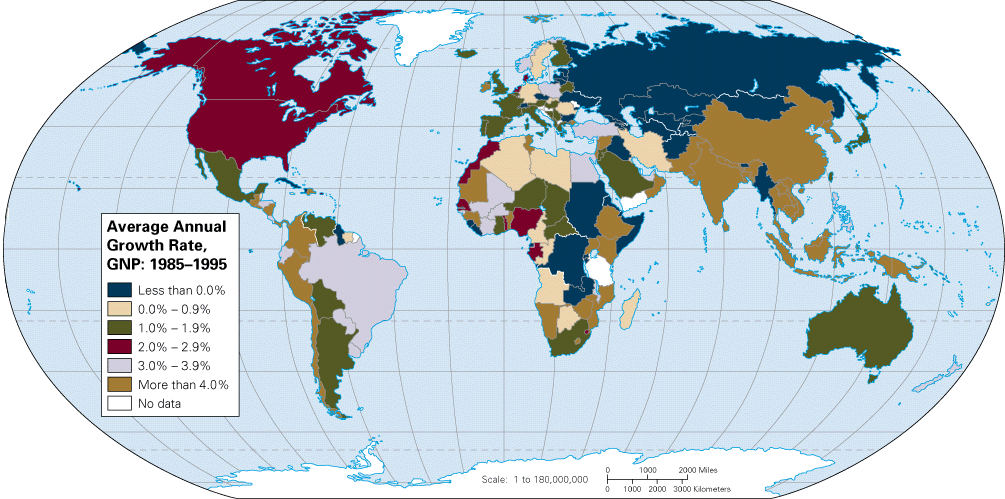Voyevodins Library _ International Business Competing in the Global Marketplace
Post on: 16 Март, 2015 No Comment

Texts belong to their owners and are placed on a site for acquaintance.
Chapter 9 Outline
Economic Theories of Exchange Rate Determination
At the most basic level, exchange rates are determined by the demand and supply of one currency relative to the demand and supply of another. For example, if the demand for dollars outstrips the supply of them and if the supply of German deutsche marks is greater than the demand for them, the dollar/mark exchange rate will change. The dollar will appreciate against the mark (or the mark will depreciate against the dollar). However, while differences in relative demand and supply explain the determination of exchange rates, they do so only in a superficial sense. This simple explanation does not tell us what factors underlie the demand for and supply of a currency. Nor does it tell us when the demand for dollars will exceed the supply (and vice versa) or when the supply of German marks will exceed demand for them (and vice versa). Neither does it tell us under what conditions a currency is in demand or under what conditions it is not demanded. In this section, we will review economic theory’s answers to these questions. This will give us a deeper understanding of how exchange rates are determined.
If we understand how exchange rates are determined, we may be able to forecast exchange rate movements. Since future exchange rate movements influence export opportunities, the profitability of international trade and investment deals, and the price competitiveness of foreign imports, this is valuable information for an international business. Unfortunately, there is no simple explanation. The forces that determine exchange rates are complex, and no theoretical consensus exists, even among academic economists who study the phenomenon every day. Nonetheless, most economic theories of exchange rate movements seem to agree that three factors have an important impact on future exchange rate movements in a country’s currency: the country’s price inflation, its interest rate, and market psychology. 5
Prices and Exchange Rates
To understand how prices are related to exchange rate movements, we first need to discuss an economic proposition known as the law of one price. Then we will discuss the theory of purchasing power parity (PPP), which links changes in the exchange rate between two countries’ currencies to changes in the countries’ price levels.
The Law of One Price
The law of one price states that in competitive markets free of transportation costs and barriers to trade (such as tariffs), identical products sold in different countries must sell for the same price when their price is expressed in terms of the same currency. 6 For example, if the exchange rate between the dollar and the French franc is $1 = FFr 5, a jacket that retails for $50 in New York should retail for FFr 250 (50 * 5) in Paris. Consider what would happen if the jacket cost FFr 300 in Paris ($60 in US currency). At this price, it would pay a company to buy jackets in New York and sell them in Paris (an example of arbitrage). The company initially could make a profit of $10 on each jacket by purchasing them for $50 in New York and selling them for FFr 300 in Paris. (We are assuming away transportation costs and trade barriers.) However, the increased demand for jackets in New York would raise their price in New York, and the increased supply of jackets in Paris would lower their price there. This would continue until prices were equalized. Thus, prices might equalize when the jacket cost $55 in New York and FFr 275 in Paris (assuming no change in the exchange rate of $1 = FFr 5).
Purchasing Power Parity
If the law of one price were true for all goods and services, the purchasing power parity (PPP) exchange rate could be found from any individual set of prices. By comparing the prices of identical products in different currencies, it would be possible to determine the real or PPP exchange rate that would exist if markets were efficient. (An efficient market has no impediments to the free flow of goods and services, such as trade barriers.)
A less extreme version of the PPP theory states that given relatively efficient markets —that is, markets in which few impediments to international trade and investment exist—the price of a basket of goods should be roughly equivalent in each country. To express the PPP theory in symbols, let P$ be the US dollar price of a basket of particular goods and PDM be the price of the same basket of goods in German deutsche marks. The PPP theory predicts that the dollar/DM exchange rate should be equivalent to:
$/DM exchange rate = P$ /PDM
Thus, if a basket of goods costs $200 in the United States and DM 600 in Germany, PPP theory predicts that the dollar/DM exchange rate should be $200/DM600 or $0.33 per DM (i.e. $1 = DM 3).
The next step in the PPP theory is to argue that the exchange rate will change if relative prices change. For example, imagine there is no price inflation in the United States, while prices in Germany are increasing by 20 percent a year. At the beginning of the year, a basket of goods costs $200 in the United States and DM 600 in Germany, so the dollar/DM exchange rate, according to PPP theory, should be $0.33 = DM 1. At the end of the year, the basket of goods still costs $200 in the United States, but it costs DM 720 in Germany. PPP theory predicts that the exchange rate should change as a result. More precisely, by the end of the year, $0.27 = DM 1 (i.e. $1 = DM 3.6). Because of price inflation, the DM has depreciated against the dollar. One dollar should buy more marks at the end of the year than at the beginning.

Money Supply and Price Inflation
In essence, PPP theory predicts that changes in relative prices will result in a change in exchange rates. Theoretically, a country in which price inflation is running wild should expect to see its currency depreciate against that of countries in which inflation rates are lower. Because the growth rate of a country’s money supply and its inflation rates are closely correlated, 7 we can predict a country’s likely inflation rate. Then we can use this information to forecast exchange rate movements.
Inflation is a monetary phenomenon. It occurs when the quantity of money in circulation rises faster than the stock of goods and services; that is, when the money supply increases faster than output increases. Imagine what would happen if everyone in the country was suddenly given $10,000 by the government. Many people would rush out to spend their extra money on those things they had always wanted—new cars, new furniture, better clothes, and so on. There would be a surge in demand for goods and services. Car dealers, department stores, and other providers of goods and services would respond to this upsurge in demand by raising prices. The result would be price inflation.
A government increasing the money supply is analogous to giving people more money. An increase in the money supply makes it easier for banks to borrow from the government and for individuals and companies to borrow from banks. The resulting increase in credit causes increases in demand for goods and services. Unless the output of goods and services is growing at a rate similar to that of the money supply, the result will be inflation. This relationship has been observed time after time in country after country.
So now we have a connection between the growth in a country’s money supply, price inflation, and exchange rate movements. Put simply, when the growth in a country’s money supply is faster than the growth in its output, price inflation is fueled. The PPP theory tells us that a country with a high inflation rate will see a depreciation in its currency exchange rate. Consider the case of Bolivia. In the mid-1980s, Bolivia experienced hyperinflation—an explosive and seemingly uncontrollable price inflation in which money loses value very rapidly. Table 9.4 presents data on Bolivia’s money supply, inflation rate, and its peso’s exchange rate with the US dollar during the period of hyperinflation. The exchange rate is actually the black market exchange rate, as the Bolivian government prohibited converting the peso to other currencies during the period. The data show that the growth in money supply, the rate of price inflation, and the depreciation of the peso against the dollar all moved in step with each other. This is just what PPP theory and monetary economics predict. Between April 1984 and July 1985, Bolivia’s money supply increased by 17,433 percent, prices increased by 22,908 percent, and the value of the peso against the dollar fell by 24,662 percent! In October 1985, the Bolivian government instituted a dramatic stabilization plan—which included the introduction of a new currency and tight control of the money supply—and by 1987 the country’s annual inflation rate was down to 16 percent. 8
Another way of looking at the same phenomenon is that an increase in a country’s money supply, which increases the amount of currency available, changes the relative demand and supply conditions in the foreign exchange market. If the US money supply is growing more rapidly than US output, dollars will be relatively more
Table 9.4
Macroeconomic Data for Bolivia, April 1984 — October 1985














